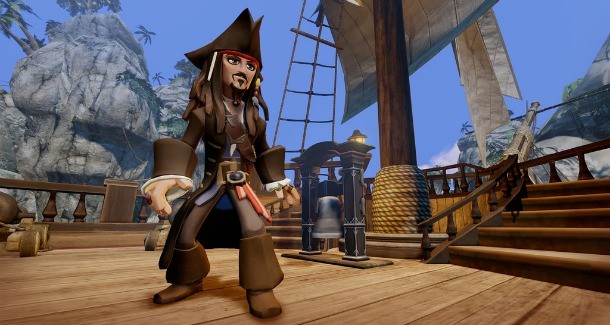Analysis – Sequels Ruled 2013, But Infinity Showed New IP Can Thrive Late In Console Cycles

Conventional wisdom holds that new IP is best delivered during the establishment of a new platform. When consumers are buying a new piece of hardware, they are more open to new gameplay experiences. Many publishers also believe it's much harder to launch a new game franchise toward the end of a console generation because any technical hiccup the game suffers may look even worse in comparison to the many franchises that have honed their craft over many iterations. This mode of thinking certainly seemed to be the driving force of 2013.
According to the NPD numbers, 9 of the top 10 selling games were sequels or ports of pre-existing franchises. Take-Two became the number one publisher of the year on the back of Grand Theft Auto V, NBA 2K14, and BioShock Infinite. Call of Duty had two entries appear in the list, and EA relied on stalwart brands like Battlefield and Madden. Ubisoft also found success in familiarity with Assassin's Creed IV: Black Flag and Just Dance 2014. Predictably, holiday shopping was also dominated by sequels as well. Each of the top 10 best-selling games was a new entry in an established franchise.
The only game that deviates from the well-worn playbook of playing it safe is Disney Infinity. This project was a unique case, because it was backed by the power of the Disney brand and also capitalized on the figurine market already so familiar to kids thanks to Skylanders. Infinity may have not been a brand new idea, but it still cost a considerable amount of money to get off the ground (with some reports claiming it cost upwards of $100 million), which is supposedly a risky endeavor at this point in a console cycle. Despite the perceived pitfalls, it proved a resounding success for Disney, moving three million starter packs. The success came at a great time for Disney's interactive business, which has been subject to shakeups after several years of underperformance.
While conventional wisdom is practiced for a reason, going against the grain and releasing a disruptive product can be just as effective provided you are releasing a quality product. During an era when most publishers believed the only time to release a major game was during the holidays, Rockstar Games put out Grand Theft Auto IV in April, taking advantage of the scarce competition to dominate sales charts throughout the summer months. More recently, in a climate where nearly every mobile evangelist had converted to the church of free-to-play and marketing experts argued that every mobile game had to feature a bright color palette and warm, fuzzy characters, Fireproof Games found resounding success by charging $4.99 for a horror themed puzzle game, The Room.
We hardly think the success of Disney Infinity will signal a sea of change in publisher thinking, and with the nascent consoles reaching new customers we expect to see a healthy dose of new IP in the coming months. But when the Xbox One and PlayStation 4 are winding down, we hope some adventurous developer with an unwavering confidence in its vision isn't dissuaded to introduce a new project into a mature marketplace. Gamers will always have appetites for new experiences, and standing out in a sea of sequels is hardly a bad thing.

Get the Game Informer Print Edition!
Explore your favorite games in premium print format, delivered to your door.
- 10 issues per year
- Only $4.80 per issue
- Full digital magazine archive access
- Since 1991









